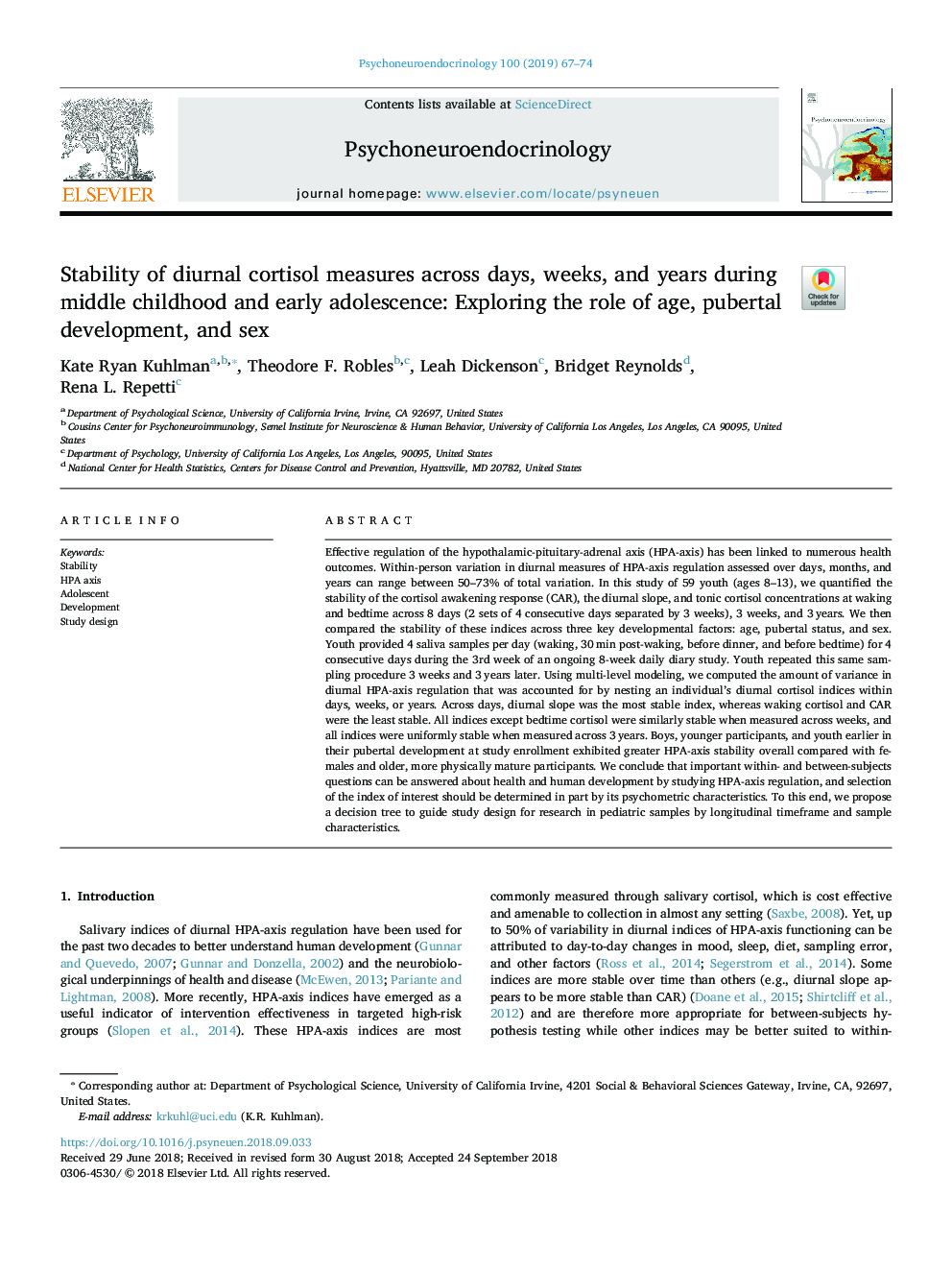| Article ID | Journal | Published Year | Pages | File Type |
|---|---|---|---|---|
| 11001551 | Psychoneuroendocrinology | 2019 | 8 Pages |
Abstract
Effective regulation of the hypothalamic-pituitary-adrenal axis (HPA-axis) has been linked to numerous health outcomes. Within-person variation in diurnal measures of HPA-axis regulation assessed over days, months, and years can range between 50-73% of total variation. In this study of 59 youth (ages 8-13), we quantified the stability of the cortisol awakening response (CAR), the diurnal slope, and tonic cortisol concentrations at waking and bedtime across 8 days (2 sets of 4 consecutive days separated by 3 weeks), 3 weeks, and 3âyears. We then compared the stability of these indices across three key developmental factors: age, pubertal status, and sex. Youth provided 4 saliva samples per day (waking, 30âmin post-waking, before dinner, and before bedtime) for 4 consecutive days during the 3rd week of an ongoing 8-week daily diary study. Youth repeated this same sampling procedure 3 weeks and 3âyears later. Using multi-level modeling, we computed the amount of variance in diurnal HPA-axis regulation that was accounted for by nesting an individual's diurnal cortisol indices within days, weeks, or years. Across days, diurnal slope was the most stable index, whereas waking cortisol and CAR were the least stable. All indices except bedtime cortisol were similarly stable when measured across weeks, and all indices were uniformly stable when measured across 3âyears. Boys, younger participants, and youth earlier in their pubertal development at study enrollment exhibited greater HPA-axis stability overall compared with females and older, more physically mature participants. We conclude that important within- and between-subjects questions can be answered about health and human development by studying HPA-axis regulation, and selection of the index of interest should be determined in part by its psychometric characteristics. To this end, we propose a decision tree to guide study design for research in pediatric samples by longitudinal timeframe and sample characteristics.
Related Topics
Life Sciences
Biochemistry, Genetics and Molecular Biology
Endocrinology
Authors
Kate Ryan Kuhlman, Theodore F. Robles, Leah Dickenson, Bridget Reynolds, Rena L. Repetti,
